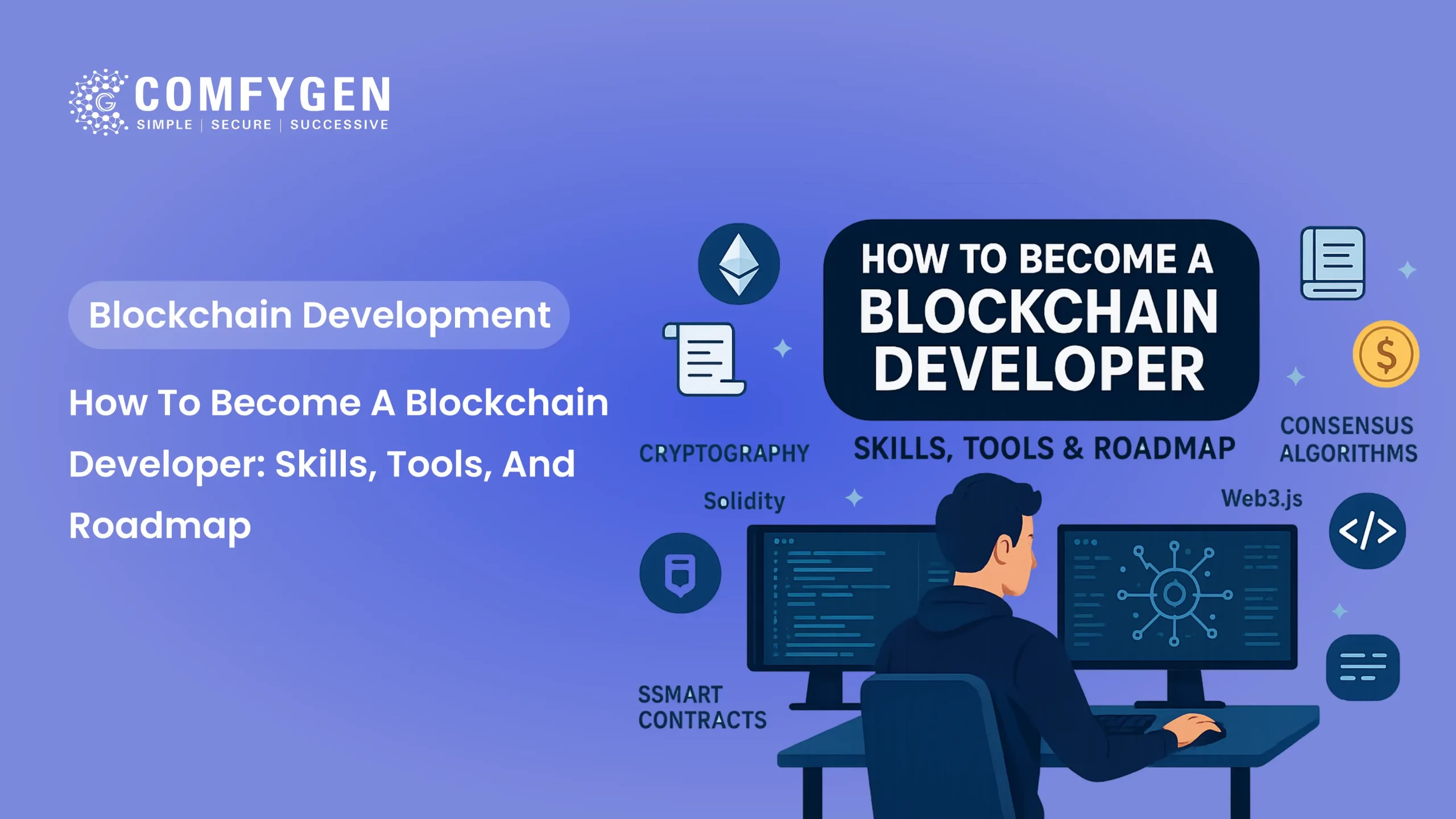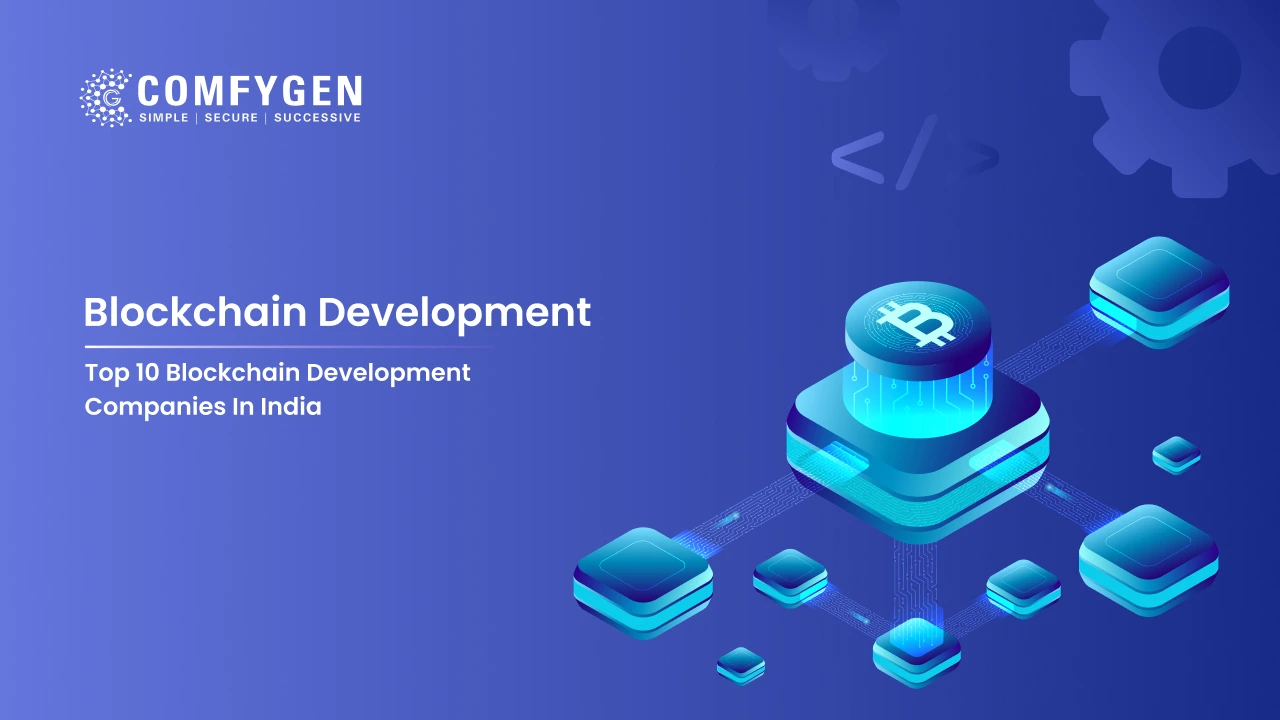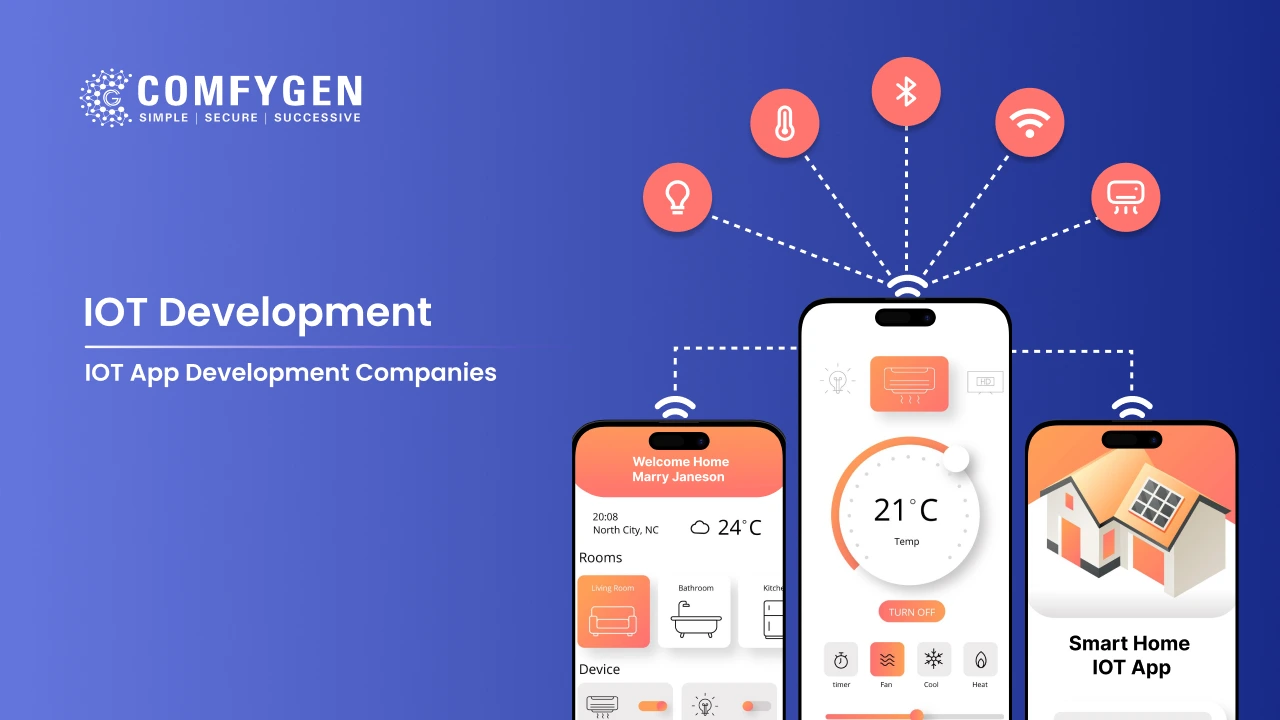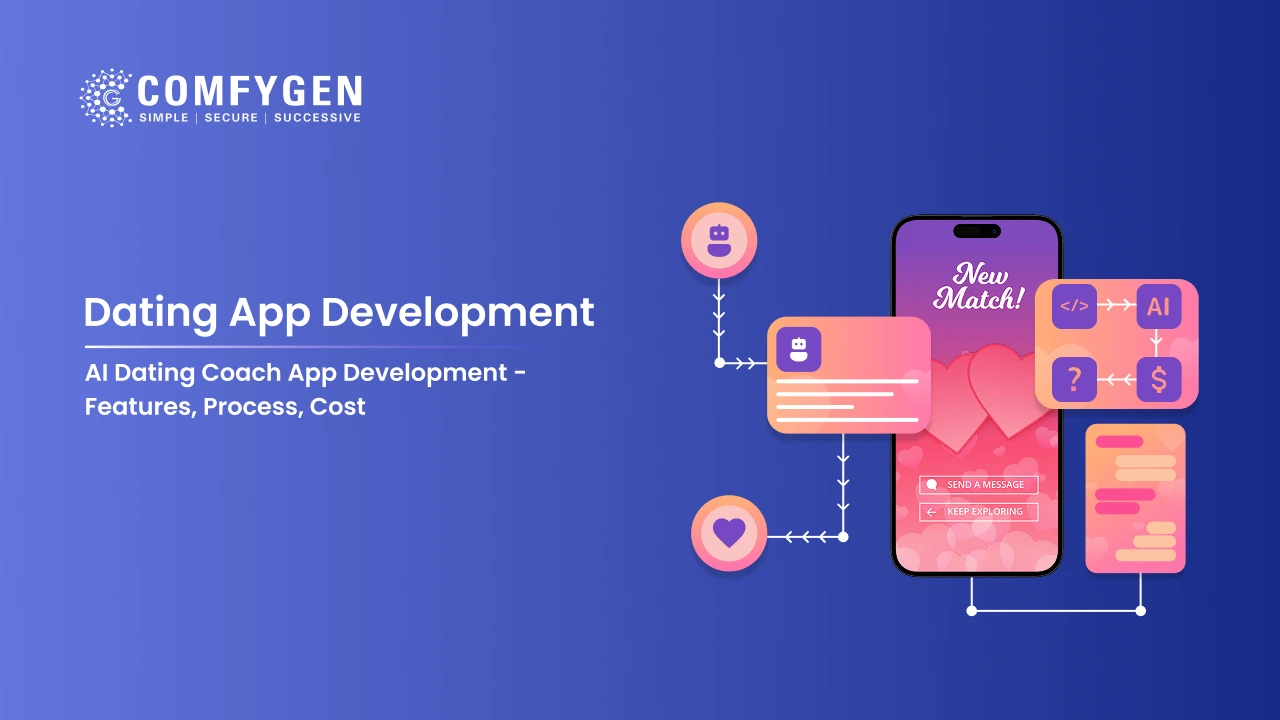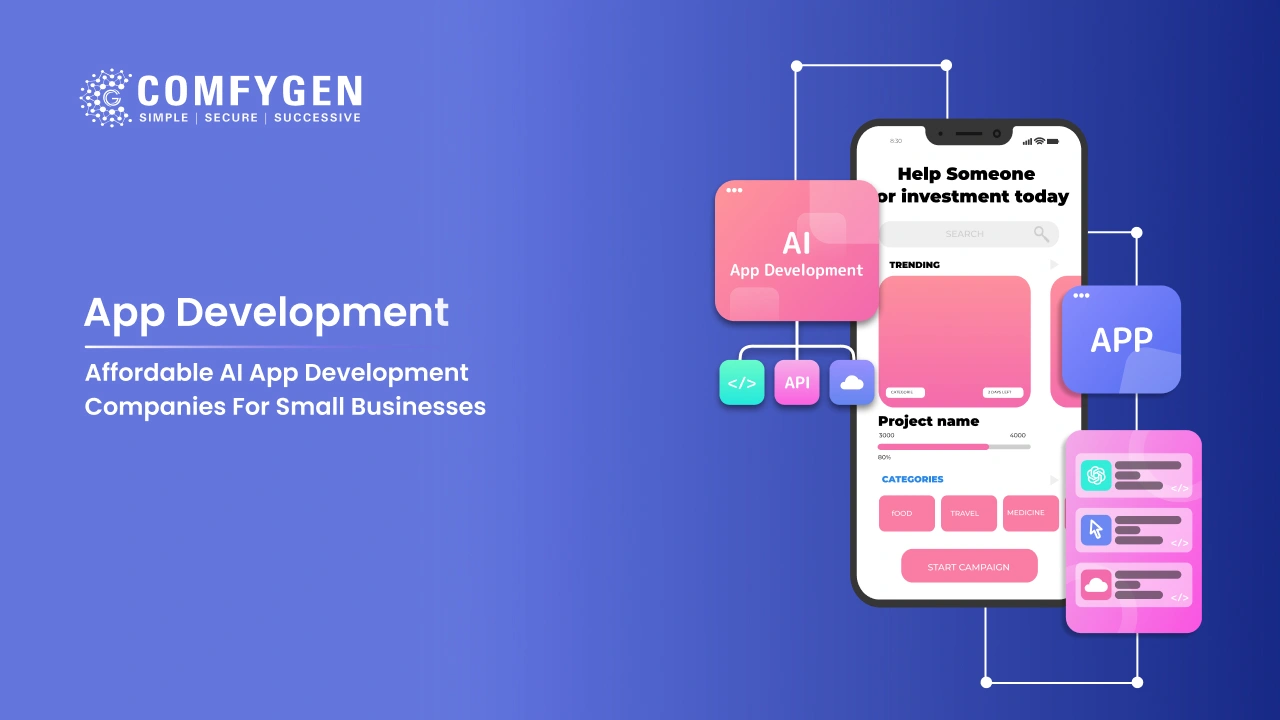How to Become a Blockchain Developer: Skills, Tools, and Roadmap
Blockchain development isn’t just about cryptocurrencies anymore. It’s become the backbone of a new digital currency. All industries, including Finance & Banking, Supply Chain & Logistics, Healthcare, Real Estate AABare adopting blockchain technology to build transparent, secure, and decentralized systems. As more businesses explore real-world blockchain applications, the demand for skilled blockchain developers has surged globally.
Here’s the thing — organizations aren’t just looking for coders; they’re after people who understand how decentralized technologies work, how to write smart contracts, and how to turn blockchain concepts into functional systems. With Web3, NFTs, and DeFi platforms growing fast, blockchain development has turned into one of the most lucrative and future-proof careers in tech. Whether you’re an experienced developer or just starting out, learning blockchain development skills now can open doors to opportunities that didn’t exist a few years ago.
Who Is a Blockchain Developer?
A blockchain developer is a software engineer who builds and maintains applications based on blockchain technology. They design the architecture, write smart contracts, and develop decentralized apps (DApps) that run without intermediaries. What sets them apart from regular developers is their deep understanding of cryptography, consensus mechanisms, and how distributed networks function.
There are mainly two types of blockchain developers, each playing a distinct role in the ecosystem:
- Core Blockchain Developer
Core Blockchain developers are working on improving existing Blockchain networks like Ethereum, Solana, or Hyperledger. These professionals focus on the foundation of the blockchain itself. They design and optimize blockchain development protocols to manage network security and handle performance improvements.
- Blockchain Software Developer
Blockchain Software Developers are working on applications. They use existing blockchain platforms to build decentralized applications, smart contracts, and integrations. They turn your application development ideas into working blockahin development solutions from DeFi platforms and NFT marketplaces to crypto wallets and supply-chain tracking systems.
Why Choose a Career in Blockchain Development?
Choosing a career in blockchain development means stepping into one of the fastest-growing tech fields in the world. All Businesses are rapidly adopting blockchain technology because it provides transparency, security, and decentralization. As a result, the demand for skilled blockchain developers has exploded across industries like finance, healthcare, logistics, real estate, and even entertainment.
What makes this field especially attractive is the blend of innovation and opportunity. Blockchain isn’t just a buzzword anymore; it’s powering the future of digital payments, DeFi platforms, NFT marketplaces, smart contracts, and Web3 applications. Companies need blockchain development experts who can turn these ideas into real-world systems, and they are ready to pay according to their talent.
Globally, blockchain developer salaries are among the highest in the tech sector. Even entry-level roles start strong, while experienced developers and smart contract engineers often earn six-figure incomes. Beyond pay, the work itself is dynamic; you’re solving complex problems, experimenting with emerging tech, and contributing to a decentralized internet.
Types of Blockchain Developers
The term blockchain developer actually covers several specialized roles. Each one contributes to a different part of the blockchain ecosystem, from building the underlying network to designing user-facing decentralized apps. Let’s break them down.
Core Blockchain Developer
A core blockchain developer works on the architecture of the blockchain itself. They design and maintain the fundamental components — consensus mechanisms, security patterns, and network protocols. These developers often contribute to major blockchain platforms like Ethereum, Bitcoin, or Hyperledger, ensuring that the system runs smoothly, securely, and efficiently.
Blockchain Software Developer
These professionals build on top of existing blockchain platforms. A blockchain software developer uses frameworks and tools to create decentralized applications (DApps), DeFi solutions, or crypto wallets. They connect front-end interfaces with smart contracts and integrate APIs to make blockchain-based systems usable for everyday users.
Smart Contract Developer
A smart contract developer focuses on writing, testing, and deploying self-executing contracts that automate transactions on blockchain networks. They usually work with languages like Solidity, Rust, or Vyper, depending on the blockchain platform. Their role is crucial in projects like NFT marketplaces, token creation, and DeFi protocols, where reliability and precision matter most.
DAppDeveloper
A decentralized application (DApp) developer combines both blockchain and traditional app development skills. They create front-end interfaces for blockchain-based systems that users interact with. Beyond coding, they understand how to connect the user interface to smart contracts, wallets, and blockchain nodes to ensure a seamless user experience.
Essential Skills You Need to become a blockchain developer
To become a blockchain developer, you don’t need just coding experience. This role demands a blend of technical expertise, problem-solving ability, and a strong understanding of how decentralized systems work. Here are the core blockchain development skills every aspiring developer should focus on:
Programming Languages
Start by mastering a few key languages used in blockchain development.
- Solidity — essential for building smart contracts on Ethereum and other EVM-compatible blockchains.
- Python — great for writing scripts, backend logic, and experimenting with blockchain frameworks.
- JavaScript — helps in integrating DApps with Web3.js or Ethers.js for front-end interactions.
- Rust and Go — popular for building high-performance blockchains like Solana, Polkadot, and Hyperledger Fabric.
Cryptography and Security Fundamentals
At the heart of every blockchain lies cryptography. Learn about hashing algorithms, encryption, digital signatures, and public–private key systems. These concepts ensure the integrity, authentication, and privacy of blockchain transactions — skills no blockchain developer can skip.
Smart Contracts and Ethereum Basics
Understanding mart contracts is non-negotiable. They’re self-executing programs that automate transactions without intermediaries. Study how Ethereum works, how gas fees are calculated, and how to deploy contracts securely using Solidity or Vyper.
Data Structures and Algorithms
Efficient data structures like Merkle Trees, Patricia Trees, and linked lists are the backbone of blockchain storage and validation. A good grasp of algorithms helps optimize how data is processed, stored, and verified across distributed nodes.
Blockchain Architecture and Consensus Mechanisms
Finally, learn how blockchain systems are designed and maintained. Understand consensus algorithms such as Proof of Work (PoW), Proof of Stake (PoS), and Delegated Proof of Stake (DPoS). These determine how participants agree on transactions and keep the network secure.
Must-Know Blockchain Tools and Technologies
Every skilled blockchain developer depends on the right set of tools and technologies to build, test, and deploy decentralized solutions efficiently. Learning how to use these tools will save time, reduce errors, and help you create production-ready blockchain applications. Let’s look at the essentials.
Development Frameworks
Frameworks make blockchain development faster and more reliable by providing ready-to-use environments for writing and deploying smart contracts.
- Truffle – One of the most popular Ethereum development frameworks. It helps compile, test, and deploy smart contracts easily.
- Hardhat – A modern alternative that’s loved for its powerful debugging and local testing features. It’s ideal for DeFi and NFT projects.
- Brownie – A Python-based framework that simplifies smart contract testing and integration with Ethereum networks.
Blockchain Platforms
Different blockchains offer unique features, so developers often specialize in one or two platforms:
- Ethereum – The leading platform for smart contract development and DApp creation.
- Solana – Known for high transaction speed and low fees, perfect for scalable blockchain apps.
- Polygon – A Layer 2 solution for Ethereum that improves scalability while maintaining compatibility.
- Hyperledger Fabric – Enterprise-focused, open-source blockchain framework widely used for supply chain, finance, and healthcare systems.
Testing and Debugging Tools
Testing is critical in blockchain because once a smart contract is deployed, it can’t be modified. Tools like Ganache, Remix IDE, and MythX allow developers to simulate networks, test transactions, and detect security vulnerabilities before deployment.
Wallets, APIs, and Libraries
Integrating wallets and APIs ensures users can interact with blockchain applications seamlessly.
- Web3.js and Ethers.js are JavaScript libraries that connect DApps to Ethereum nodes.
- MetaMask and Trust Wallet help users interact with DApps directly from their browsers or mobile devices.
- Alchemy and Infura provide powerful APIs to connect applications to blockchain networks without managing your own node.
Step-by-Step Roadmap to Becoming a Blockchain Developer
If you’re serious about becoming a blockchain developer, you’ll need a clear path to follow. Here’s a practical, step-by-step roadmap that takes you from understanding the basics to landing your first blockchain job or freelance project.
Step 1: Learn the Basics of Blockchain Technology
Start by understanding how blockchain technology works — blocks, nodes, consensus mechanisms, and the concept of decentralization. Study how transactions are validated and recorded on distributed ledgers. Free resources like Ethereum’s documentation or IBM Blockchain 101 are great starting points.
Step 2: Master Key Programming Languages
Next, focus on the programming skills that power blockchain.
- Learn Solidity to write smart contracts on Ethereum and EVM-compatible chains.
- Get comfortable with Python, JavaScript, and Go to handle backend logic, scripting, and blockchain APIs.
- Explore Rust if you’re aiming for high-performance blockchains like Solana or Polkadot.
Step 3: Explore Blockchain Platforms and Protocols
Each blockchain has its own structure and rules. Gain hands-on experience with leading blockchain platforms such as Ethereum, Polygon, Solana, and Hyperledger Fabric. Learn how consensus algorithms like Proof of Stake (PoS) and Proof of Work (PoW) function behind the scenes.
Step 4: Practice Building Smart Contracts and DApps
Once you grasp the basics, start developing. Create simple smart contracts using Solidity, test them with Remix IDE or Hardhat, and then move to full decentralized applications (DApps). Build something practical — a token, a small NFT project, or a simple DeFi app.
Step 5: Contribute to Open-Source Projects
Open-source collaboration helps you learn real-world blockchain development practices. Join communities on GitHub, Reddit, or Discord where blockchain developers share code, discuss bugs, and build together. It’s one of the fastest ways to improve your skills and credibility.
Step 6: Build Your Blockchain Portfolio
Showcase your work. Create a GitHub repository of your smart contracts, DApps, and project demos. Document what you’ve built — your code, architecture, and deployment process. A strong portfolio helps you stand out when applying for blockchain developer jobs or client projects.
Step 7: Apply for Blockchain Developer Roles or Freelance Gigs
With skills and a portfolio in hand, start applying. You can look for positions as a smart contract developer, DApp developer, or blockchain engineer at startups, Web3 firms, or enterprise tech companies. Platforms like LinkedIn, AngelList, and Upwork are great for finding opportunities in blockchain development and Web3.
Real-World Blockchain Projects to Practice
The best way to learn blockchain development is by building real projects. Theory gives you structure, but hands-on experience turns you into a real blockchain developer. Here are a few project ideas to get you started.
- Token Creation (ERC-20 / BEP-20)
Create your own cryptocurrency token on Ethereum or Binance Smart Chain (BSC). This teaches you how smart contracts work, how tokens are minted and transferred, and what makes standards like ERC-20 and BEP-20 so widely used in DeFi. - NFT Marketplace
Build a small NFT marketplace where users can mint, buy, or sell NFTs.You’ll learn how smart contracts, metadata, and wallet integrations work together to power digital ownership. Frameworks like Hardhat or Truffle make this process much smoother. - DeFi Application
Develop a simple DeFi app such as a decentralized exchange (DEX), staking platform, or lending protocol. This will help you understand liquidity pools, token swaps, and the financial logic behind decentralized systems. - Blockchain-Based Voting System
A blockchain voting system ensures transparency and security — perfect for learning how to store and verify transactions immutably. This project highlights blockchain’s real-world impact beyond crypto and finance.
Conclusion
Becoming a blockchain developer takes dedication, curiosity, and constant learning — but the rewards are worth it. Start with the fundamentals, build real projects, and never stop experimenting. Every line of code you write brings you closer to mastering a technology that’s reshaping the digital world.
The demand for blockchain developers isn’t slowing down. So take the next step — choose a blockchain platform, build your first project, and step confidently into the future of decentralized development.

Mr. Saddam Husen, (CTO)
Mr. Saddam Husen, CTO at Comfygen, is a renowned Blockchain expert and IT consultant with extensive experience in blockchain development, crypto wallets, DeFi, ICOs, and smart contracts. Passionate about digital transformation, he helps businesses harness blockchain technology’s potential, driving innovation and enhancing IT infrastructure for global success.
Based on Interest

Create a Crypto Token for Your Business with Blockchain Technology
Blockchain technology evolution is transforming every industry with its secure parameters, transparency, and interoperability. Additionally, the tokenization market is growing from $2-3…

